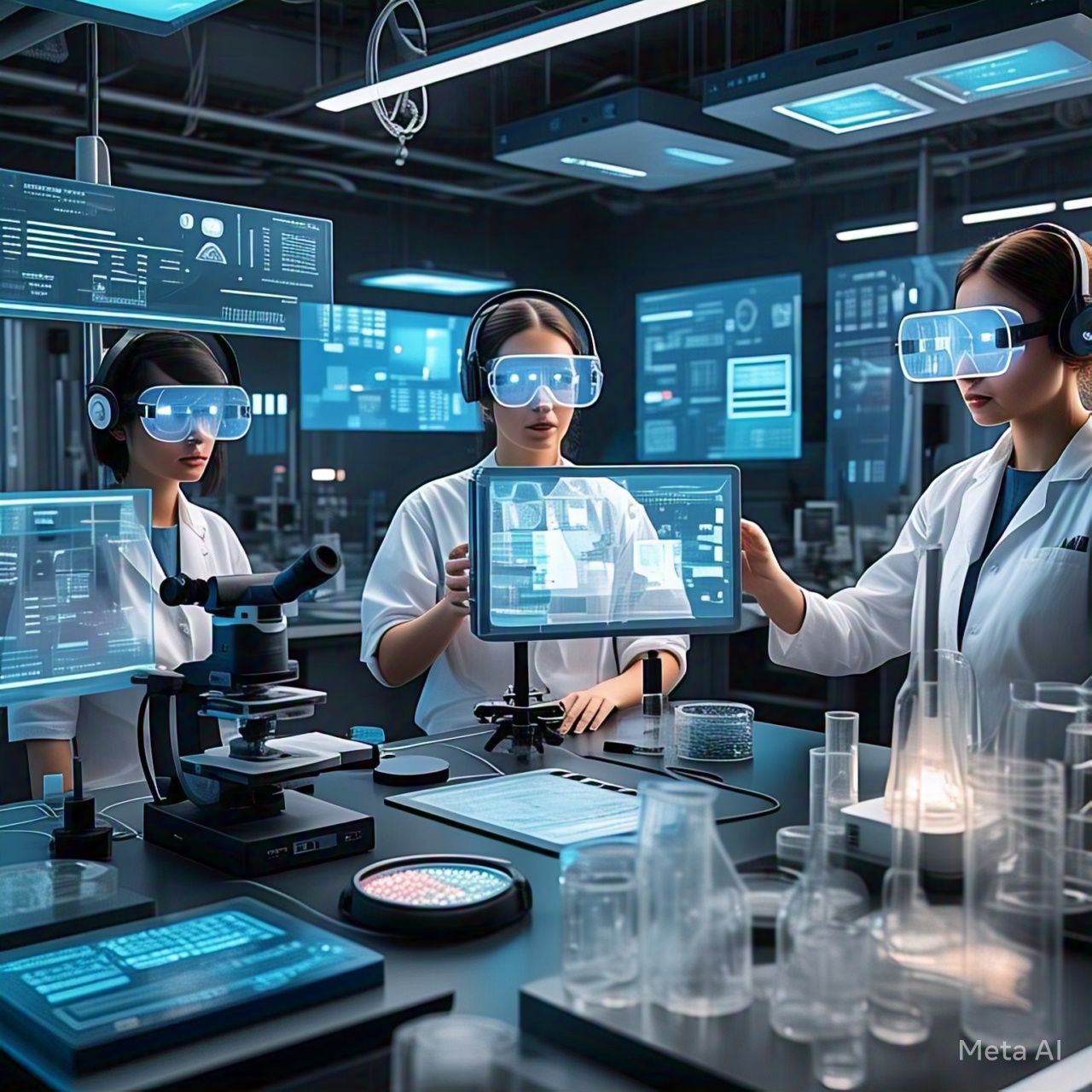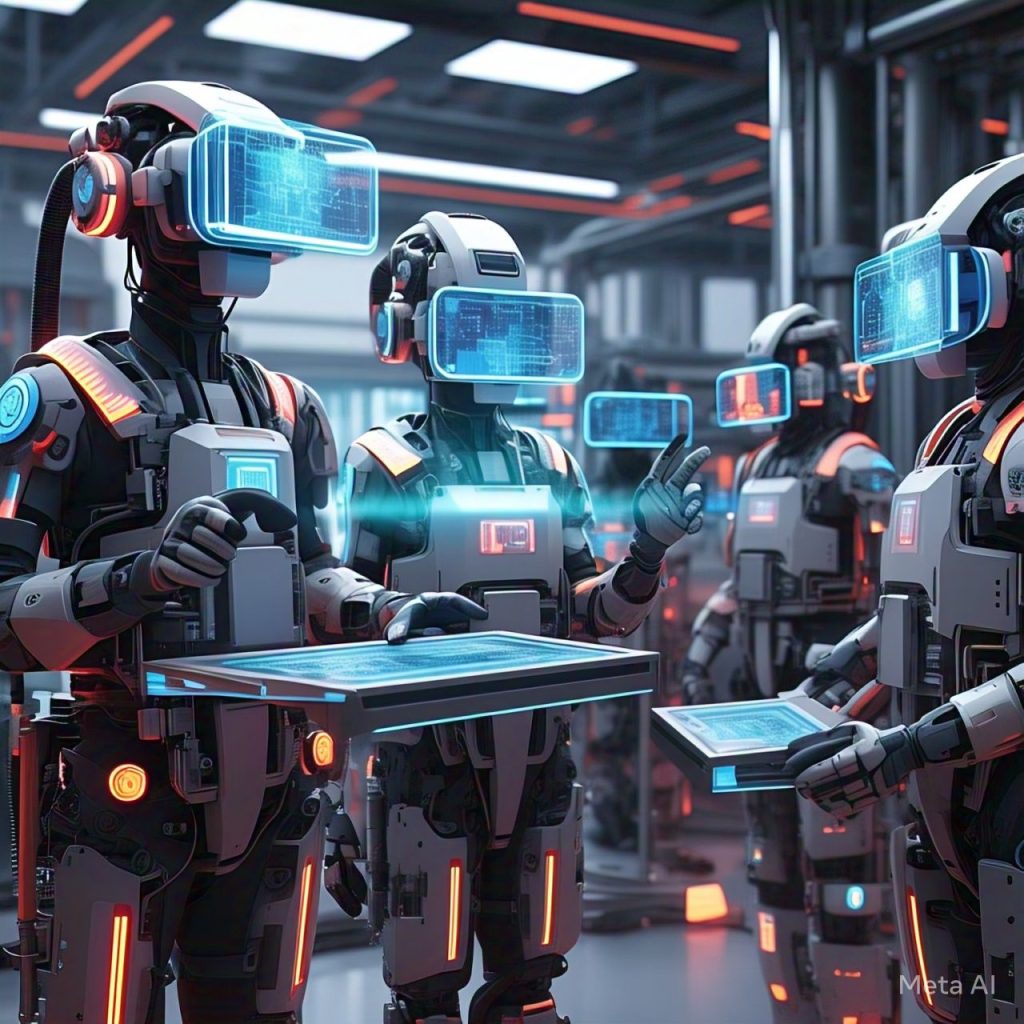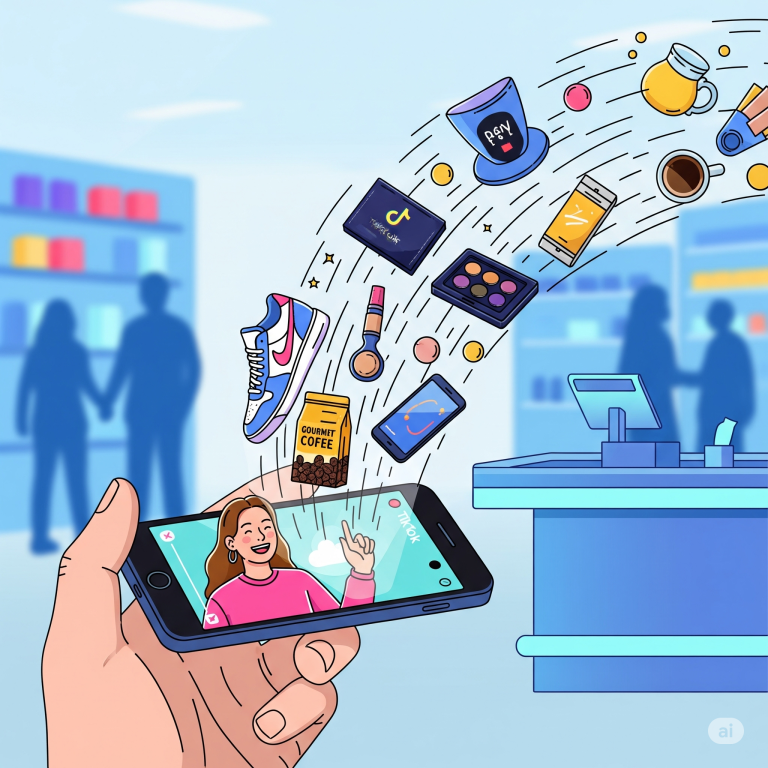
AR/VR in industry
The rapid evolution of AR/VR technology is transforming the landscape of modern industries, sparking a revolution in the way businesses operate, engage with customers, and redefine their service offerings. Augmented Reality (AR) and Virtual Reality (VR) are no longer mere concepts confined to the entertainment industry. These groundbreaking technologies are expanding their reach into sectors as diverse as healthcare, education, manufacturing, retail, and real estate, while the rise of the Metaverse integration promises to reshape how industries interact with virtual and physical environments. What was once a futuristic vision is now becoming an integral part of everyday business operations, offering more immersive, engaging, and innovative ways to conduct work and engage with customers.
The convergence of AR/VR technology and the Metaverse presents immense opportunities for industry innovation. By enabling immersive experiences, these technologies are unlocking new realms of possibility, enhancing user interactions, boosting productivity, and creating dynamic new business models. As the world continues to embrace the digital age, the importance of AR/VR in shaping the future of technology becomes even more apparent, marking a significant milestone in how technology will shape the next era of business and human interaction.
Understanding AR/VR Technology and Their Impact on Industries
The terms augmented reality and virtual reality are often used interchangeably, but they serve different purposes in modern business contexts. Both, however, are pivotal to the ongoing technological transformation.
What is Augmented Reality (AR)?
Augmented Reality refers to the integration of digital information with the user’s environment in real-time. Unlike virtual reality, which immerses users in a completely different digital world, AR enhances the real world by adding layers of digital content—such as images, sounds, or information—into the physical space around the user. This creates a more interactive and informative environment, allowing users to experience an enriched version of the world.
The ability of AR technology to overlay digital elements on physical environments is already making waves across several industries. In retail, for instance, customers can visualize products in their own space before making a purchase, whether it’s testing out how a new piece of furniture will look in their home or trying on virtual clothes through an app. Similarly, augmented reality is being leveraged for training in fields like medicine and engineering, where users can practice procedures or simulations without the risk of making costly mistakes.
What is Virtual Reality (VR)?
On the other hand, Virtual Reality creates a completely immersive, computer-generated environment that users can interact with in real-time. Through VR headsets and motion sensors, users are transported to entirely new worlds where they can perform tasks, learn new skills, or even escape into virtual spaces. Unlike AR, which enhances the real world, VR offers an entirely new and separate experience, creating an environment with no boundaries between the user and the technology.
The applications of virtual reality in industries are vast and varied. In manufacturing and design, VR can be used for product development, allowing designers to prototype products virtually before committing resources to production. In real estate, virtual tours provide clients with the ability to explore properties from the comfort of their homes, while the gaming industry continues to explore new dimensions of immersive entertainment. VR’s role in immersive experiences is evident across healthcare, education, and even marketing, offering users innovative ways to engage, learn, and experience content.
The Metaverse: A New Dimension of Connectivity

At the intersection of AR/VR technology lies the Metaverse—a collective, virtual shared space, created by the convergence of virtually enhanced physical reality and the persistent virtual environments built by augmented reality and virtual reality. The Metaverse integration brings together digital spaces, avatars, and immersive experiences, creating a new frontier for the internet and human interaction.
The Metaverse has the potential to redefine how businesses engage with consumers, employees, and other stakeholders. In a fully realized Metaverse, businesses can host virtual meetings, hold conferences, offer virtual goods and services, and even create entire digital storefronts. Brands can design virtual worlds that allow customers to explore their products and services in entirely new ways. For industries like real estate, it enables potential buyers to explore virtual properties as though they were physically present. For retail, it offers customers a chance to shop in digital stores, trying on clothes or interacting with products in a space that is as real as the physical world.
Transforming Business Operations through the Metaverse
The Metaverse provides companies with innovative ways to engage employees and foster collaboration. Through virtual workspaces, companies can conduct meetings and collaborations in 3D environments, allowing for more natural interactions. Remote work can be taken to a new level, offering virtual office spaces that mimic physical office environments while enhancing communication and collaboration.
Moreover, the Metaverse integration is revolutionizing training and simulation. Industries such as aviation, healthcare, and the military can create hyper-realistic virtual environments where employees and trainees can learn and practice tasks without the risk or expense of real-world trials. VR simulations are being used to train surgeons, pilots, and engineers, improving skills and reducing errors.
Industry Innovation Powered by AR/VR Technology
The marriage of augmented reality, virtual reality, and the Metaverse is paving the way for remarkable industry innovation. Several sectors are already capitalizing on these technologies to enhance their operations, streamline processes, and create memorable experiences for their customers.
Healthcare
In healthcare, AR/VR technology has already started to make waves. Augmented Reality is helping surgeons with real-time visualization of patient data during procedures. By overlaying essential medical information, AR assists in improving precision and reducing errors. Similarly, virtual reality is being used in medical training, where trainees can practice surgeries or procedures in a risk-free environment. The Metaverse promises to take this to the next level, providing fully immersive medical environments for both training and patient care.
Retail
In retail, both AR and VR are reshaping the way consumers shop. Augmented Reality allows customers to visualize products in their space before buying. For example, furniture retailers like IKEA allow customers to view how furniture will look in their homes through AR apps. Virtual Reality has also allowed consumers to shop in virtual stores, trying on clothing or interacting with products in a way that replicates real-life shopping experiences. This is setting the stage for the future of immersive experiences in retail, where shopping will feel like an adventure in a virtual world, accessible from anywhere.
Real Estate
The Metaverse and virtual reality have revolutionized the real estate industry. Virtual tours enable potential buyers to explore properties remotely, offering an immersive experience without leaving their homes. Real estate companies are also experimenting with AR technology to show properties to clients in real-time, allowing them to make on-the-fly adjustments to designs, layouts, or even view potential renovations virtually.
Education and Training
The education sector is another area where AR/VR technology is providing game-changing solutions. Teachers can use AR to overlay educational content on physical objects, turning traditional learning into interactive and engaging experiences. Virtual Reality is offering immersive simulations for students to explore historical events, scientific concepts, or even complex mathematical theories. The Metaverse promises to take this further, providing fully immersive, virtual classrooms where students can interact with each other and the environment in innovative ways.
Entertainment and Gaming
Gaming has been at the forefront of AR/VR technology, and its integration with the Metaverse is taking it to unimaginable heights. Players can immerse themselves in virtual worlds, where physical limitations are erased and the only boundaries are those of the imagination. The immersive experiences offered by VR gaming are already providing some of the most compelling entertainment on the market. The Metaverse is likely to expand these experiences into even broader, interconnected virtual spaces where players can interact with each other in real-time.
The Future of Technology: AR/VR and the Metaverse
As AR/VR technology and the Metaverse continue to evolve, the future of technology is poised to undergo a dramatic transformation. The integration of these advanced technologies will not only redefine how industries operate but also revolutionize human interaction with the digital world. Businesses that embrace these innovations will gain a competitive edge, offering customers and clients unique, memorable, and efficient experiences.
From virtual collaboration in the workplace to shopping in fully immersive digital stores, the future of technology will blur the lines between the real and the virtual. With continuous advancements in AR/VR and the development of the Metaverse, the possibilities are endless. The integration of these technologies will continue to reshape industries, creating new avenues for industry innovation and offering immersive experiences that will become a core part of everyday life.
In conclusion, AR/VR technology and the Metaverse are not just trends—they are the future. The integration of these technologies into various industries is transforming the way we work, learn, shop, and even live. As businesses and consumers continue to embrace the possibilities of augmented reality, virtual reality, and immersive experiences, the world is entering a new era of technological innovation that will change everything.




